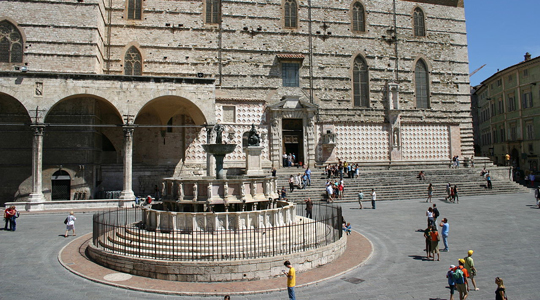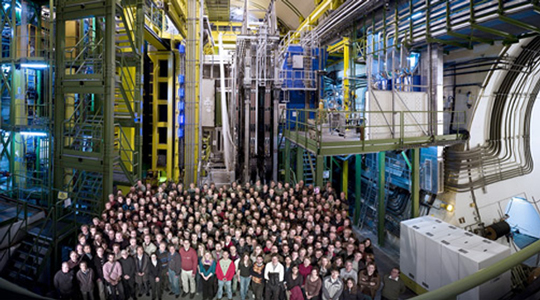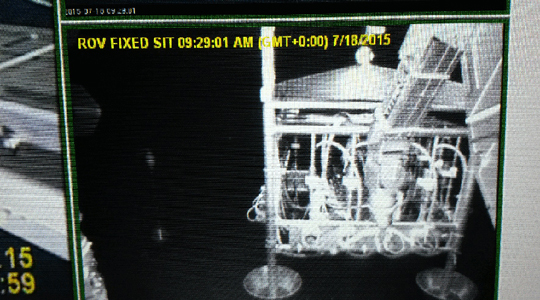EUROPE FOCUSES ON ESS
 ESS (European Spallation Source), the multi-disciplinary research centre based on the most powerful neutron source in the world, has been recently established as an European Consortium ERIC (European Research Infrastructure Consortium). The completion of this important milestone, recently approved by the European Commission, will guarantee a more agile management of the infrastructure construction and a lower cost realization. Already included among the strategic projects in the European Strategy Forum on Research Infrastructures (ESFRI) roadmap, ESS will enhance new areas of research and application in the fields of fundamental physics, life sciences, energy, environmental technology and cultural heritage. The construction of ESS, recently started, involves 17 countries, with Sweden and Denmark host nations. The two countries will be respectively the base of the research centre and the supercomputing facility, this last designed to manage the large amount of produced data. Italy participates in ESS with the Ministry of Education, University and Research (MIUR) and with INFN, holding the role of Italy coordinator, the National Research Council (CNR) and Elettra Synchrotron Trieste. The total planned investment amounts to 1.84 billion euro, the 6% of which will be from Italy, mainly (80%) as an in-kind contribution through the provision of machine parts. As for other countries, ESS will have for Italy a double strategic value: on one hand, it provides a unique opportunity for scientific research, whether basic or applied; on the other hand, a strong R&D effort will involve high technology industries, making of ESS an economic driver for the whole of Europe.
ESS (European Spallation Source), the multi-disciplinary research centre based on the most powerful neutron source in the world, has been recently established as an European Consortium ERIC (European Research Infrastructure Consortium). The completion of this important milestone, recently approved by the European Commission, will guarantee a more agile management of the infrastructure construction and a lower cost realization. Already included among the strategic projects in the European Strategy Forum on Research Infrastructures (ESFRI) roadmap, ESS will enhance new areas of research and application in the fields of fundamental physics, life sciences, energy, environmental technology and cultural heritage. The construction of ESS, recently started, involves 17 countries, with Sweden and Denmark host nations. The two countries will be respectively the base of the research centre and the supercomputing facility, this last designed to manage the large amount of produced data. Italy participates in ESS with the Ministry of Education, University and Research (MIUR) and with INFN, holding the role of Italy coordinator, the National Research Council (CNR) and Elettra Synchrotron Trieste. The total planned investment amounts to 1.84 billion euro, the 6% of which will be from Italy, mainly (80%) as an in-kind contribution through the provision of machine parts. As for other countries, ESS will have for Italy a double strategic value: on one hand, it provides a unique opportunity for scientific research, whether basic or applied; on the other hand, a strong R&D effort will involve high technology industries, making of ESS an economic driver for the whole of Europe.




 L'Università di Perugia ha bandito una borsa di dottorato dal titolo “ Comunicazione e divulgazione della cultura scientifica nel settore della fisica”. La borsa attivata dal Dipartimento di Fisica e Geologia dell'Università di Perugia è finanziata dall'Istituto Nazionale di Fisica Nucleare (INFN).
L'Università di Perugia ha bandito una borsa di dottorato dal titolo “ Comunicazione e divulgazione della cultura scientifica nel settore della fisica”. La borsa attivata dal Dipartimento di Fisica e Geologia dell'Università di Perugia è finanziata dall'Istituto Nazionale di Fisica Nucleare (INFN). On 27 July, a few days after publication of the measurements on pentaquarks - the LHCb experiment at CERN’s Large Hadron Collider - the results of a new high-precision measurement performed on the decays of baryons containing the b quark were published in Nature Physics and presented at the International Conference of the European Physical Society (EPS) being held in Vienna. The study helps to clarify the experimental framework for the possibility of the existence of new physics in electroweak interactions. This result was obtained by studying the decay of the baryonic particle called Lambda b (Λb) which decays into a proton, a muon and a muon antineutrino. At the quark level, in this process a b quark of the Λb turns into a u quark resulting in a proton, while emitting a W boson that decays into a muon and its antineutrino. This type of measurement is called “exclusive”, because it only considers a specific type of decay. The parameter measured in this article, called Vub, describes the probability of a b quark turning into a u quark. This parameter is part of the Cabibbo-Kobayashi-Maskawa (CKM) matrix, which describes all the possible quark mixings. Since the Standard Model is not able to predict the absolute value of the parameters of the CKM matrix but, more simply, consistency relations which these must satisfy, accurate experimental measurements of the various processes, involving different types of quarks, are of extreme importance to understand whether the CKM mechanism is the actual key to the interpretation of all mixing phenomena between quarks in the sub-microscopic world. Should an inconsistency between the different elements of the matrix be found, this would represent an indication of the existence of new physics beyond the theory that we know today. The result published by LHCb is not in agreement with the “inclusive” measurements of this parameter published in the literature. In these inclusive measurements, Vub is obtained by studying all the possible decays of B mesons in which a b quark becomes a u quark, but without considering a final state in particular. The Vub value from inclusive measurements is not compatible, within the experimental uncertainties, with the provisions of the Standard Model, and this can be interpreted with the need to correct the Standard Model by introducing new physics. This Vub measurement made by LHCb, in perfect agreement with the exclusive measurements previously carried out by LHCb and by the BaBar and Belle experiments, is instead perfectly consistent with the Standard Model as we know it, thus contributing to dispelling doubts about the possible existence of new aspects of electroweak interactions. The discrepancy between inclusive and exclusive Vub measurements, however, at the moment remains an open question that will continue to be investigated in the coming years, both at the experimental as well as theoretical level. The result is the first of its kind to have been obtained from an experiment using collisions between hadrons, as the LHC, as well as the first to have been obtained by studying the decay of a baryon containing a b quark. The precision required for this type of measurement is achieved thanks to the excellent performance of the LHC and the LHCb.
On 27 July, a few days after publication of the measurements on pentaquarks - the LHCb experiment at CERN’s Large Hadron Collider - the results of a new high-precision measurement performed on the decays of baryons containing the b quark were published in Nature Physics and presented at the International Conference of the European Physical Society (EPS) being held in Vienna. The study helps to clarify the experimental framework for the possibility of the existence of new physics in electroweak interactions. This result was obtained by studying the decay of the baryonic particle called Lambda b (Λb) which decays into a proton, a muon and a muon antineutrino. At the quark level, in this process a b quark of the Λb turns into a u quark resulting in a proton, while emitting a W boson that decays into a muon and its antineutrino. This type of measurement is called “exclusive”, because it only considers a specific type of decay. The parameter measured in this article, called Vub, describes the probability of a b quark turning into a u quark. This parameter is part of the Cabibbo-Kobayashi-Maskawa (CKM) matrix, which describes all the possible quark mixings. Since the Standard Model is not able to predict the absolute value of the parameters of the CKM matrix but, more simply, consistency relations which these must satisfy, accurate experimental measurements of the various processes, involving different types of quarks, are of extreme importance to understand whether the CKM mechanism is the actual key to the interpretation of all mixing phenomena between quarks in the sub-microscopic world. Should an inconsistency between the different elements of the matrix be found, this would represent an indication of the existence of new physics beyond the theory that we know today. The result published by LHCb is not in agreement with the “inclusive” measurements of this parameter published in the literature. In these inclusive measurements, Vub is obtained by studying all the possible decays of B mesons in which a b quark becomes a u quark, but without considering a final state in particular. The Vub value from inclusive measurements is not compatible, within the experimental uncertainties, with the provisions of the Standard Model, and this can be interpreted with the need to correct the Standard Model by introducing new physics. This Vub measurement made by LHCb, in perfect agreement with the exclusive measurements previously carried out by LHCb and by the BaBar and Belle experiments, is instead perfectly consistent with the Standard Model as we know it, thus contributing to dispelling doubts about the possible existence of new aspects of electroweak interactions. The discrepancy between inclusive and exclusive Vub measurements, however, at the moment remains an open question that will continue to be investigated in the coming years, both at the experimental as well as theoretical level. The result is the first of its kind to have been obtained from an experiment using collisions between hadrons, as the LHC, as well as the first to have been obtained by studying the decay of a baryon containing a b quark. The precision required for this type of measurement is achieved thanks to the excellent performance of the LHC and the LHCb. Today in Vienna, during the annual conference of the European Physical Society (EPS), the prizes of the EPS High Energy and Particle Physics board (HEPP) were awarded. Among the five theoretical physicists receiving the prize were the Italians Giorgio Parisi, Professor of Theoretical Physics at the Sapienza University of Rome and INFN associate, and Guido Altarelli, Emeritus Professor of Theoretical Physics at the University of Roma Tre and former Director of the Rome Section of INFN (see his article entitled Oggi è già domani - Today is already Tomorrow - in the latest issue of Asimmetrie, focused on new physics). Sharing the prize with them - one of the most prestigious in physics, as demonstrated by the fact that many of the EPS prize winners have also received the Nobel Prize for Physics - was also James D. Bjorken from Stanford University, Yuri L. Dokshitzer from the Universities of Paris and St. Petersburg and Lev Lipatov, also from St. Petersburg. The EPS prizes were awarded to the five academics for their pioneering research on the structure of protons and, in particular, “for having developed the scheme of a probabilistic field theory for the dynamics of quarks and gluons, enabling a quantitative understanding of high-energy collisions between hadrons”. During the meeting in Vienna - currently bringing together 700 physicists in the Austrian capital to discuss the latest discoveries of the LHC and the prospect of finding new physics after the restart of the super accelerator in Geneva, with collisions at 13 TeV (13 trillion electron volts) - two prizes were also awarded to young physicists, the Young Experimental Physicists Prizes, and a prize for scientific outreach. Receiving the prize, together with Jan Fiete Grosse-Oetringhaus, was also the Italian Giovanni Petrucciani, who has worked for a long time at the INFN in Pisa, “for his outstanding contributions to the optimisation of the tracer in the CMS detector at the LHC, to the discovery of the Higgs boson and to the measurement of its properties”. For scientific outreach, the prize went to Kate Shaw of the ATLAS experiment, and a member of the Associated Group of the INFN in Udine “for her engagement in the master classes, and for having contributed to their dissemination in countries that do not have a strong tradition in physics.”
Today in Vienna, during the annual conference of the European Physical Society (EPS), the prizes of the EPS High Energy and Particle Physics board (HEPP) were awarded. Among the five theoretical physicists receiving the prize were the Italians Giorgio Parisi, Professor of Theoretical Physics at the Sapienza University of Rome and INFN associate, and Guido Altarelli, Emeritus Professor of Theoretical Physics at the University of Roma Tre and former Director of the Rome Section of INFN (see his article entitled Oggi è già domani - Today is already Tomorrow - in the latest issue of Asimmetrie, focused on new physics). Sharing the prize with them - one of the most prestigious in physics, as demonstrated by the fact that many of the EPS prize winners have also received the Nobel Prize for Physics - was also James D. Bjorken from Stanford University, Yuri L. Dokshitzer from the Universities of Paris and St. Petersburg and Lev Lipatov, also from St. Petersburg. The EPS prizes were awarded to the five academics for their pioneering research on the structure of protons and, in particular, “for having developed the scheme of a probabilistic field theory for the dynamics of quarks and gluons, enabling a quantitative understanding of high-energy collisions between hadrons”. During the meeting in Vienna - currently bringing together 700 physicists in the Austrian capital to discuss the latest discoveries of the LHC and the prospect of finding new physics after the restart of the super accelerator in Geneva, with collisions at 13 TeV (13 trillion electron volts) - two prizes were also awarded to young physicists, the Young Experimental Physicists Prizes, and a prize for scientific outreach. Receiving the prize, together with Jan Fiete Grosse-Oetringhaus, was also the Italian Giovanni Petrucciani, who has worked for a long time at the INFN in Pisa, “for his outstanding contributions to the optimisation of the tracer in the CMS detector at the LHC, to the discovery of the Higgs boson and to the measurement of its properties”. For scientific outreach, the prize went to Kate Shaw of the ATLAS experiment, and a member of the Associated Group of the INFN in Udine “for her engagement in the master classes, and for having contributed to their dissemination in countries that do not have a strong tradition in physics.” Laying operations of the three key technology components of the KM3NeT underwater neutrino telescope have been successfully completed: the new Cable Termination Frame (CTF) and two Junction Boxes (JB). These will be used to connect the first 20 submarine detection units (of the 100 planned) of the KM3NeT (cubic kilometre) experiment, under construction in the sea off Sicily, at a depth of 3,500 m. The marine operation, lasting seven days, ended on 21 July off Capo Passero and involved the ships “Ambrosius Tide” and “Antonio Meucci”, coordinated on-board and on the ground, by a team of INFN researchers. The monitoring and testing necessary for implementation of the system, and to verify the perfect functioning of the 100 km long cable, were performed at the Capo Passero Laboratory of the National Laboratories of the South (LNS) that hosts the telescope’s control centre. “This is an important success achieved thanks to teamwork led by INFN personnel. The entire system is now ready to host telescope’s detection units”, said Giacomo Cuttone, Director of LNS. Km3NeT is an international collaboration, in which Italy plays a fundamental role with the National Institute for Nuclear Physics, with the contribution of Cyprus, France, Germany, Greece, Ireland, the Netherlands, the United Kingdom, Romania and Spain. Nine INFN groups are participating (Bari, Bologna, Catania, Genoa, LNF, LNS, Naples, Pisa, Rome), in collaboration and in synergy with geophysical, oceanographic and marine biology research institutes (INGV, CNR, CIBRA, NURC).
Laying operations of the three key technology components of the KM3NeT underwater neutrino telescope have been successfully completed: the new Cable Termination Frame (CTF) and two Junction Boxes (JB). These will be used to connect the first 20 submarine detection units (of the 100 planned) of the KM3NeT (cubic kilometre) experiment, under construction in the sea off Sicily, at a depth of 3,500 m. The marine operation, lasting seven days, ended on 21 July off Capo Passero and involved the ships “Ambrosius Tide” and “Antonio Meucci”, coordinated on-board and on the ground, by a team of INFN researchers. The monitoring and testing necessary for implementation of the system, and to verify the perfect functioning of the 100 km long cable, were performed at the Capo Passero Laboratory of the National Laboratories of the South (LNS) that hosts the telescope’s control centre. “This is an important success achieved thanks to teamwork led by INFN personnel. The entire system is now ready to host telescope’s detection units”, said Giacomo Cuttone, Director of LNS. Km3NeT is an international collaboration, in which Italy plays a fundamental role with the National Institute for Nuclear Physics, with the contribution of Cyprus, France, Germany, Greece, Ireland, the Netherlands, the United Kingdom, Romania and Spain. Nine INFN groups are participating (Bari, Bologna, Catania, Genoa, LNF, LNS, Naples, Pisa, Rome), in collaboration and in synergy with geophysical, oceanographic and marine biology research institutes (INGV, CNR, CIBRA, NURC).

